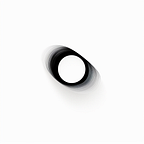Harmony in Healing: Exploring the Depth of Holistic Therapies.
“The part can never be well unless the whole is well.” — Plato
Holistic therapies, a concept as ancient as it is modern, weave a narrative that intertwines the physical, mental, and spiritual aspects of health and wellness. These therapies represent a paradigm shift from conventional medicine’s focus on treating symptoms, advocating for a more integrated approach to healing.
Defining holistic therapies can be likened to understanding a forest; it’s not just about the individual trees but how they interact with the soil, sunlight, wildlife, and each other to create an ecosystem. Similarly, holistic therapies view health as the harmonious interaction of the body, mind, and spirit within the individual’s environment.
The history of holistic therapy is as old as human civilization itself. Ancient medical practices, whether Hippocrates’ teachings in Greece, Ayurveda in India, or traditional Chinese medicine, all embodied a holistic view of health. These practices were not merely medical interventions but philosophical approaches to living harmoniously with nature and oneself. The 20th century witnessed a resurgence in these ancient wisdoms, often as a response to the perceived limitations of Western medicine. Notable milestones include the establishment of the American Holistic Health Association in the 1980s and the growing integration of holistic practices in mainstream healthcare.
The importance of holistic approaches lies in their capacity to address the complexities of human health. They offer more than just physical healing; they provide pathways to emotional and spiritual well-being, emphasizing the interconnectedness of various aspects of an individual’s life. This approach recognizes that emotional states can influence physical health, just as physical ailments can affect mental well-being.
In exploring the diverse landscape of holistic therapies, one encounters a rich mosaic of approaches that span cultures and scientific disciplines. From acupuncture and Ayurveda to mindfulness and yoga, each modality offers a unique lens through which to view and treat health issues. This diversity reflects the myriad ways different cultures understand and interact with the human body and mind.
Effectively utilizing holistic approaches often involves a blend of traditional wisdom and modern scientific understanding. For instance, acupuncture, a staple of traditional Chinese medicine, is now often used in conjunction with Western medical treatments to manage pain and stress. Similarly, mindfulness and meditation, once purely spiritual practices, have found a place in modern psychotherapy to help treat anxiety and depression. The key is in finding a balance, where these therapies complement rather than replace conventional medical treatments.
However, the path of holistic therapies is not without its pitfalls. One significant challenge is ensuring that practitioners are adequately trained and knowledgeable. The lack of standardized regulations in some holistic fields can lead to inconsistencies in care and, in some cases, harmful practices. Additionally, there is the risk of individuals eschewing conventional medical treatments in favor of alternative therapies, which can be detrimental, especially in cases of serious illnesses.
An example of where holistic approaches can be misapplied is in the treatment of serious diseases like cancer. While holistic therapies can significantly aid in pain management and improving quality of life, relying solely on these treatments without conventional medical intervention can have dire consequences. This highlights the need for a balanced and integrated approach to health, where holistic therapies serve as a complement to, rather than a replacement for, conventional medicine.
The realm of holistic therapies often reveals surprising and inspirational stories that underscore their potential. For instance, the use of mindfulness and meditation in prisons has shown remarkable results in reducing recidivism and improving mental health among inmates. These stories not only highlight the efficacy of holistic practices but also their versatility and adaptability to various environments and populations.
Looking ahead, the future of holistic therapies appears to be one of integration and expansion. As research continues to uncover the scientific underpinnings of these practices, we can expect a more seamless blending of holistic and conventional medicine. This could manifest in more hospitals offering complementary therapies like acupuncture or meditation alongside standard treatments, or in increased insurance coverage for such therapies.
In conclusion, the journey through the world of holistic therapies is akin to exploring a vast and intricate landscape, where each path offers unique insights into health and well-being. As we continue to navigate this terrain, the promise of a more holistic and integrated approach to healthcare seems not only possible but essential. The key lies in balance and integration, recognizing that the best health outcomes often come from a synergy of traditional wisdom and modern science.
